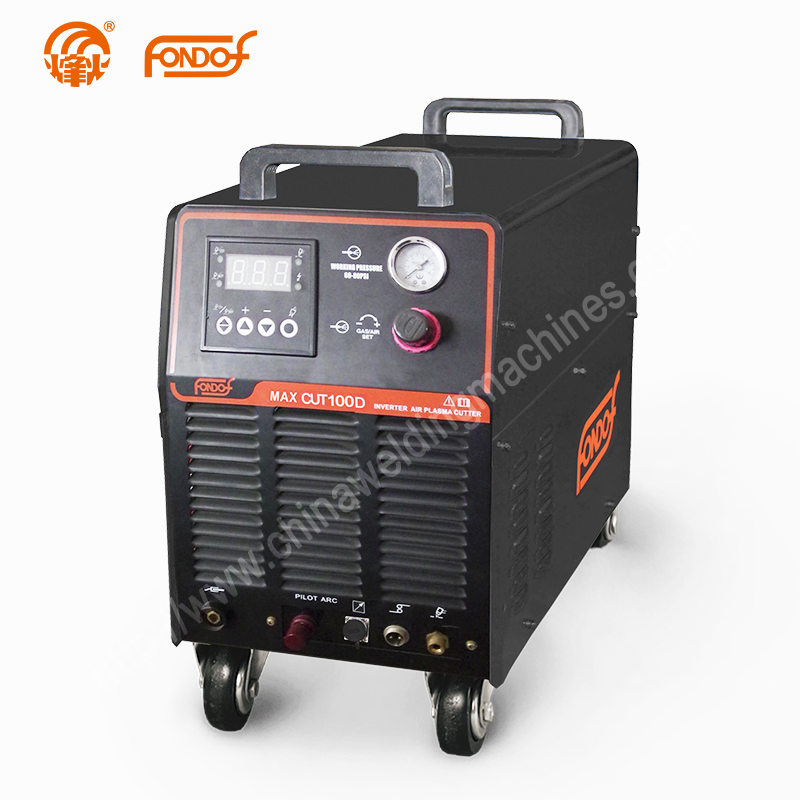Selecting the right plasma cutter is crucial for achieving efficient and precise metal cutting results. With a variety of options available on the market, it's essential to consider several factors to ensure that you choose a plasma cutter that meets your specific metalworking needs. This guide will help you navigate through the decision-making process and make an informed choice when selecting a plasma cutter.
One of the first considerations when choosing a plasma cutter is its cutting capacity. Determine the maximum thickness of the metal you plan to cut regularly. Plasma cutters have a specified cutting capacity range, and selecting a cutter that can handle your required thickness will ensure optimal performance and clean cuts. It's important to note that higher amperage plasma cutters typically offer a greater cutting capacity.
The duty cycle of a Plasma Cutting Machine refers to the amount of time it can operate continuously within a ten-minute period without overheating. Duty cycles are expressed as a percentage, such as 60% or 80%. A higher duty cycle indicates that the plasma cutter can operate for a longer duration before requiring a cool-down period. Consider your cutting needs and select a plasma cutter with an appropriate duty cycle that can accommodate your workflow.

Plasma cutters require a power source to operate effectively. Assess the power availability in your workspace and choose a plasma cutter that aligns with the electrical specifications. Consider the voltage, amperage, and phase requirements of the cutter, and ensure that your power supply can meet these specifications. Additionally, be aware of any compatibility issues with the electrical outlets in your workspace.
Consider whether portability is a priority for your metalworking needs. If you require a plasma cutter that can be easily transported or moved around the worksite, look for lightweight and compact models. Some plasma cutters come with built-in carrying handles or shoulder straps for convenient mobility. However, if your cutter will remain stationary in a workshop, portability may be less of a concern.
Different plasma cutters offer varying cutting speeds and cut quality. Higher-end models often provide faster cutting speeds, which can significantly improve productivity. Additionally, some plasma cutters feature advanced technologies that enhance cut quality by reducing dross and improving edge smoothness. Consider the desired cutting speed and cut quality for your metalworking projects and select a plasma cutter that aligns with your requirements.
Look for a plasma cutter that offers user-friendly controls and an intuitive interface. Clear and accessible controls will make operation easier, especially for beginners. Consider features such as adjustable amperage, pilot arc starting, and continuous pilot arc for smoother and more consistent cuts. An easy-to-understand control panel will streamline your cutting process and save time.
Evaluate the availability and cost of consumables for the plasma cutter you are considering. Plasma cutters require consumables such as electrodes, nozzles, and shields, which may need to be replaced periodically. Check the cost and accessibility of these consumables to ensure that they align with your budget and are readily available. Additionally, consider the maintenance requirements of the plasma cutter and assess if they are feasible for your needs.
Prioritize safety when choosing a plasma cutter. Look for models that incorporate safety features such as thermal overload protection, overvoltage protection, and tip saver modes. These features help prevent overheating, voltage fluctuations, and extend the life of consumables. Additionally, consider models with built-in safety mechanisms like a safety trigger or an auto-off feature to minimize the risk of accidents during operation.
Consider the warranty and customer support provided by the manufacturer. A solid warranty ensures that you are protected against defects or malfunctions in the plasma cutter. Additionally, responsive customer support can assist you with troubleshooting, repairs, or any questions you may have. Research the reputation of the welding machine manufacturer and read customer reviews to gauge the level of support provided.
Set a budget for your plasma cutter purchase. Plasma cutters are available in a wide range of prices, and it's important to strike a balance between your budget and the features and capabilities you require. While it may be tempting to opt for a cheaper model, consider the long-term value and quality of the plasma cutter. Investing in a reliable and durable plasma cutter will likely save you money on repairs and replacements in the long run.
By considering these factors and evaluating your specific metalworking needs, you can confidently choose a plasma cutter that aligns with your requirements. Whether you're a professional metalworker or a hobbyist, selecting the right plasma cutter will enhance your cutting efficiency and improve the quality of your projects.
Previous: Why dump trucks are essential to construction?
Next: Air Bubble Film Extrusion Machine: Protecting Products with Innovative Packaging
Copyright:@2020-2021
Comments Please sign in or sign up to post.
0
0 of 500 characters used